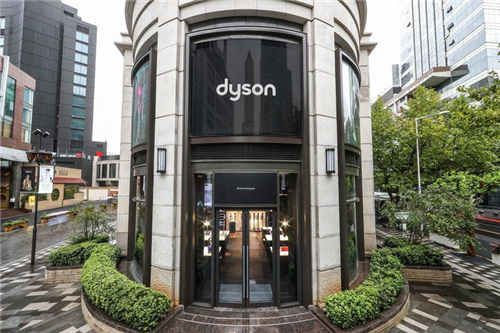Dyson sells more than 400 US dollars for a table lamp, how many people will bury
“I believe that buying just one lamp in a lifetime is enough. The rapid product turnover and high replacement rate in this industry are fundamentally flawed. This is something we need to change, and it’s all about environmental sustainability,†said Jake Dyson, responding to how consumers deal with product updates. As the son of James Dyson, founder of British home appliance brand Dyson, Jake is not only known for his family legacy but also for his innovative approach to lighting. In 2011, he developed a lamp that could last up to 37 years, using a design that was both functional and long-lasting.
For nearly a decade, Jake focused on extending the lifespan of LED bulbs, ensuring they emit steady, soft, and flicker-free light throughout their use. The key to achieving this was the lamp’s advanced heat dissipation system. He designed a lamp that used a vacuum copper tube containing a small amount of water and a set of LED beads. The water absorbed the heat from the LEDs, evaporated, and then conducted the heat to the other end of the tube, where it cooled and condensed back into a droplet, returning to the base. This closed-loop system effectively removed most of the heat generated by the LED, significantly increasing the lamp's longevity to 40 years while maintaining consistent lighting quality.

Despite its impressive engineering, the CSYS lamp didn’t immediately capture the same public attention as his father’s G-Force vacuum cleaner. Part of the challenge was that people were more concerned about dust than about flickering lights. In 2015, James Dyson acquired his son’s lighting studio, bringing the lamp into the Dyson product line at a price of $439. While the technology was groundbreaking, consumer reactions varied. Many questioned why such a simple function required such a high price. Some said, “Why spend over $400 for a lamp when a $5 one does the same job?†Others felt the premium was too high compared to its value, and some even joked, “I don’t want to own a lamp that lasts longer than I do.â€
In September 2017, Jake Dyson visited Shanghai to launch his new lamps, introducing these challenges to the Chinese market. At the event, Dyson engineers demonstrated the copper tube heat dissipation system and the lamp’s flexible rotation. One engineer explained, “When people take photos with their phones, they often notice flicker from indoor lighting. But if you look through the camera lens, you’ll see that this lamp’s flicker is much less noticeable.â€


Jake emphasized that many companies still rely on outdated methods, even though modern solutions could simplify things. “I’ve spoken with over 20 LED manufacturers, and they all follow the same old process. But the truth is, solving the problem doesn’t require so many steps. It’s more about thinking differently,†he said. His comments align with Dyson’s overall philosophy, yet they haven’t fully addressed concerns about the lamp’s high price. After all, the difference in flicker may seem minor to many.
Dyson’s lighting products have since become part of the company’s broader range, and in China, the brand has seen some success. According to Michael Day Tod, CEO of Dyson China, about 10% of domestic users still purchase Dyson products overseas. Despite this, the company continues to push forward, aiming to expand its presence in the world’s largest market.

Dyson Experience Store at Shanghai Xingye Taikoo Hui
At the Dyson Experience Store in Shanghai Xingye Taikoo Hui, visitors can interact with various “dust samples†like wood chips, salt, rice, and coffee beans, placed in transparent jars. Employees explain the digital motor and cyclone technology inside the vacuum cleaners, allowing customers to experience the powerful suction firsthand.
Before officially entering the Chinese market in late 2012, Dyson had already gained a following through overseas purchases—products that were expensive, rare, and highly regarded. Once the brand entered China, however, the growth was slower than in the UK or US markets. Despite efforts to bring products to the market quickly, exchange rate differences made some products cheaper in Hong Kong than in mainland China.


Dyson remains optimistic about the Chinese market, especially given the low penetration of vacuum cleaners in households. According to Euromonitor data from 2016, only 5.3% of Chinese households owned a cylindrical vacuum cleaner. If Dyson can increase that number to 30%, it would represent a significant opportunity in a country with a huge population.
While Dyson’s vacuum cleaners have been well-received, the company has faced questions after launching other products, such as the hair dryer. Some users noted that while the wind speed was strong and the temperature control was good, the device still felt more like a luxury item than an essential tool.
Although Dyson believes it has few direct competitors in its category, the Chinese market is complex, and many of its designs are quickly imitated. For example, the popular D-531 cordless vacuum cleaner on Taobao closely resembles Dyson’s model and is sold for around 999 yuan.
Tomas Mark, Dyson China’s marketing director, said the team is working to understand the unique social dynamics of the Chinese market. “In the UK, we pay attention to what people talk about in bars. In China, we study WeChat conversations—what people discuss online is what we need to know,†he said.
Editor: Yan Zhixiang
Grain Bin Full Sensor,Grain Auger Full Bin Alarm,Grain Bin Full Alarm,Grain Bin Full Indicator
Changzhou Youeryou Trading Co., Ltd. , https://www.farmpartssupplier.com